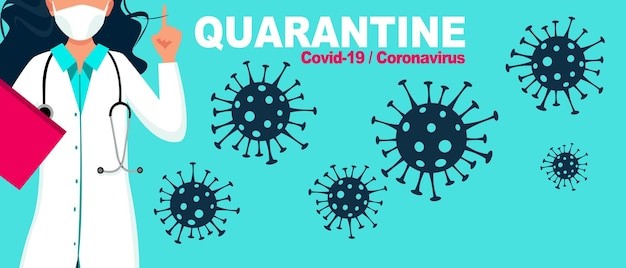
Image Source: FreeImages
## Introduction to Hospital-Acquired Infections (HAIs)
Hospital-Acquired Infections (HAIs), also known as healthcare-associated infections or hospital infections, are a significant concern for patients and healthcare systems worldwide. HAIs are infections that occur during a patient’s stay in a healthcare facility, such as hospitals or long-term care facilities. These infections are not present or incubating at the time of admission and are unrelated to the patient’s original condition. HAIs can have severe consequences, including prolonged hospital stays, increased healthcare costs, and even death.
Understanding the Impact of HAIs on Patients and Healthcare Systems
The impact of HAIs on patients and healthcare systems is substantial. Patients who acquire infections while in the hospital are at a higher risk of complications and may require additional treatments, such as surgery or prolonged antibiotic therapy. These complications can delay recovery and lead to longer hospital stays, increasing the burden on healthcare resources.
Furthermore, HAIs pose a significant economic burden on healthcare systems. The cost associated with treating HAIs, including additional healthcare services, medications, and extended hospital stays, amounts to billions of dollars annually. These costs not only affect individual patients but also strain the overall healthcare system.
Common Types of HAIs and their Definitions
There are various types of HAIs, each with its own distinct definition and characteristics. Some common types of HAIs include:
- Urinary Tract Infections (UTIs): UTIs are infections that occur in the urinary system, including the bladder and kidneys. These infections are one of the most common types of HAIs and often result from the use of urinary catheters.
- Surgical Site Infections (SSIs): SSIs are infections that occur at the site of a surgical incision. These infections can be superficial, affecting the skin and underlying tissues, or deep, involving organs or implanted devices.
- Bloodstream Infections: Bloodstream infections, also known as bacteremia or sepsis, occur when bacteria or other pathogens enter the bloodstream. These infections can be life-threatening and often result from the use of intravenous catheters or poor infection control practices.
- Pneumonia: Hospital-acquired pneumonia is an infection that affects the lungs and can occur when patients are on mechanical ventilation or have impaired mobility, making it difficult to clear secretions from the airways.
Causes and Risk Factors of HAIs
HAIs can be caused by a variety of factors, including the presence of pathogens in healthcare settings, compromised immune systems of patients, and inadequate infection control practices. Some common risk factors for HAIs include:
- Invasive Procedures: Patients who undergo invasive procedures, such as surgeries or the insertion of medical devices, are at a higher risk of developing HAIs. These procedures create an entry point for pathogens to enter the body.
- Weakened Immune Systems: Patients with weakened immune systems, such as those with chronic illnesses or undergoing cancer treatments, are more susceptible to infections. Their bodies may have a harder time fighting off pathogens, increasing the risk of HAIs.
- Antibiotic Resistance: The emergence of antibiotic-resistant bacteria has become a significant concern in healthcare settings. These bacteria are more difficult to treat and can contribute to the development of HAIs.
- Poor Hand Hygiene: Inadequate hand hygiene practices among healthcare professionals can contribute to the spread of pathogens and increase the risk of HAIs. Proper hand hygiene, including handwashing with soap and water or using alcohol-based hand sanitizers, is crucial in preventing the transmission of infections.
How HAIs are Transmitted in Healthcare Settings
HAIs are most often spread by direct contact with contaminated surfaces, healthcare workers, or other infected patients. The following modes of transmission are commonly observed in healthcare settings:
- Contact Transmission: Direct contact with an infected patient or contaminated surfaces is a common mode of transmission for HAIs. This can occur through physical touch or by touching contaminated objects, such as bedrails or medical equipment.
- Droplet Transmission: Some infections, such as influenza or respiratory viruses, can be transmitted through droplets expelled when an infected person coughs or sneezes. These droplets can travel a short distance and infect others who are in close proximity.
- Airborne Transmission: Certain infections, such as tuberculosis or measles, can be transmitted through tiny particles that remain suspended in the air for an extended period. These particles can be inhaled by others, leading to infection.
- Vector-borne Transmission: In rare cases, HAIs can be transmitted through vectors, such as mosquitoes or ticks, which carry infectious pathogens from one individual to another.
It is essential to implement strict infection control measures, such as proper cleaning and disinfection protocols, to limit the transmission of HAIs in healthcare settings.
The Importance of Infection Prevention in Hospitals
Infection prevention plays a crucial role in reducing the incidence of HAIs and safeguarding the well-being of patients. Implementing effective infection prevention strategies can help minimize the risk of infections and enhance patient safety. Some key aspects of infection prevention in hospitals include:
- Adherence to Hand Hygiene Practices: Healthcare professionals must rigorously follow hand hygiene protocols to reduce the transmission of pathogens. Regular handwashing and the use of hand sanitizers can significantly decrease the risk of HAIs.
- Proper Sterilization and Disinfection: Thorough cleaning, sterilization, and disinfection of medical equipment and healthcare facilities are essential in preventing the spread of infections. This includes regular cleaning of patient rooms, operating theaters, and other high-touch surfaces.
- Appropriate Use of Antibiotics: Healthcare professionals should prescribe antibiotics judiciously, following evidence-based guidelines. Overuse or misuse of antibiotics can contribute to the development of antibiotic-resistant bacteria, increasing the risk of HAIs.
- Implementation of Vaccination Programs: Vaccination plays a crucial role in preventing specific infections, such as influenza or hepatitis. Healthcare facilities should encourage both patients and healthcare workers to receive recommended vaccinations to reduce the risk of HAIs.
By prioritizing infection prevention measures, hospitals can create a safer environment for patients and healthcare professionals, ultimately reducing the burden of HAIs.
Strategies for Preventing HAIs
Preventing HAIs requires a multi-faceted approach that encompasses various strategies and interventions. Some effective strategies for preventing HAIs include:
- Enhanced Surveillance: Implementing robust surveillance systems to monitor the incidence and trends of HAIs can help identify areas of concern and guide targeted interventions.
- Education and Training: Healthcare professionals should receive comprehensive education and training on infection prevention practices. This includes proper hand hygiene techniques, appropriate use of personal protective equipment, and adherence to infection control protocols.
- Patient Engagement: Engaging patients in their own care can contribute to infection prevention efforts. Educating patients about infection control measures, encouraging active involvement in their treatment, and promoting open communication can empower patients to take an active role in preventing HAIs.
- Environmental Cleaning and Disinfection: Ensuring proper cleaning and disinfection of healthcare facilities, including patient rooms, operating theaters, and common areas, is crucial in reducing the risk of HAIs. Implementing standardized cleaning protocols and monitoring compliance can help maintain a clean and safe environment.
The Role of Healthcare Professionals in HAI Prevention
Healthcare professionals play a pivotal role in preventing HAIs. By adhering to best practices and infection control guidelines, healthcare professionals can significantly contribute to reducing the incidence of HAIs. Some key responsibilities of healthcare professionals in HAI prevention include:
- Compliance with Infection Control Protocols: Healthcare professionals should strictly adhere to infection control protocols, including hand hygiene practices, proper use of personal protective equipment, and appropriate disposal of contaminated materials.
- Continuous Education and Training: Staying updated on the latest research, guidelines, and best practices in infection prevention is crucial for healthcare professionals. Continuous education and training can help improve knowledge and skills, leading to better implementation of infection prevention measures.
- Active Surveillance and Reporting: Healthcare professionals should actively participate in surveillance activities, reporting any suspected or confirmed cases of HAIs. Timely identification and reporting of infections enable prompt interventions and prevent further transmission.
- Collaboration and Communication: Effective communication and collaboration among healthcare professionals are essential in preventing HAIs. This includes sharing information, coordinating care, and implementing consistent infection prevention practices across different healthcare settings.
By fulfilling their roles and responsibilities, healthcare professionals can create a culture of infection prevention and contribute to safer healthcare environments.
Promising Technologies for HAI Detection and Prevention
Advancements in technology have paved the way for innovative solutions in HAI detection and prevention. These technologies aim to enhance surveillance, improve infection control practices, and reduce the risk of HAIs. Some promising technologies include:
- Electronic Surveillance Systems: Electronic surveillance systems leverage data from electronic health records and other sources to detect and monitor HAIs. These systems can provide real-time alerts, facilitate data analysis, and help identify patterns or outbreaks.
- Automated Hand Hygiene Monitoring: Automated hand hygiene monitoring systems use sensors and algorithms to track healthcare professionals’ hand hygiene compliance. These systems provide real-time feedback and reminders, encouraging adherence to proper hand hygiene practices.
- UV-C Disinfection Robots: UV-C disinfection robots use ultraviolet light to kill or inactivate pathogens in healthcare environments. These robots can be deployed in patient rooms, operating theaters, or other high-risk areas, complementing traditional cleaning and disinfection practices.
- Antimicrobial Surfaces: Antimicrobial surfaces, such as copper alloys or antimicrobial coatings, have shown promise in reducing the survival and spread of pathogens. These surfaces can be incorporated into frequently touched objects or high-risk areas, acting as an additional layer of defense against HAIs.
While these technologies hold great potential, their implementation should be guided by evidence-based practices and integrated into comprehensive infection prevention strategies.
The Future of HAI Prevention and Control
The future of HAI prevention and control is marked by ongoing advancements in research, technology, and healthcare practices. Some key areas of focus for the future include:
- Antimicrobial Stewardship: Strengthening antimicrobial stewardship programs and promoting the responsible use of antibiotics will be crucial in combating the emergence of antibiotic-resistant bacteria and reducing the risk of HAIs.
- Vaccination Strategies: Continued efforts to increase vaccination rates among both patients and healthcare professionals can significantly contribute to HAI prevention. The development of new vaccines and the expansion of existing vaccination programs will play a vital role in reducing the burden of HAIs.
- Integration of Artificial Intelligence: The integration of artificial intelligence (AI) and machine learning algorithms can enhance infection surveillance and prediction models. AI can help identify patterns, predict outbreaks, and guide targeted interventions, ultimately reducing the incidence of HAIs.
- Patient-Centered Approaches: Emphasizing patient-centered care and involving patients as partners in infection prevention efforts will be crucial for the future. Engaging patients, promoting shared decision-making, and tailoring interventions to individual needs can lead to more effective HAI prevention strategies.
By embracing these advancements and focusing on collaborative efforts, healthcare systems can continue to make significant strides in preventing and controlling HAIs.
Conclusion: Taking Action to Prevent HAIs
Hospital-Acquired Infections (HAIs) pose a significant threat to patients and healthcare systems worldwide. Understanding the impact of HAIs, their causes, and modes of transmission is essential in developing effective prevention strategies. By prioritizing infection prevention measures, implementing innovative technologies, and fostering a culture of collaboration, healthcare professionals can make a significant difference in reducing the incidence of HAIs.
It is crucial for healthcare professionals, patients, and policymakers to take action and prioritize HAI prevention. By adhering to proper infection control practices, promoting hand hygiene, implementing robust surveillance systems, and embracing technological advancements, we can work towards a future where HAIs are minimized, patient safety is enhanced, and healthcare systems are more resilient.
*Take action now to prevent HAIs and safeguard the well-being of patients and healthcare professionals. Together, we can make a difference!



